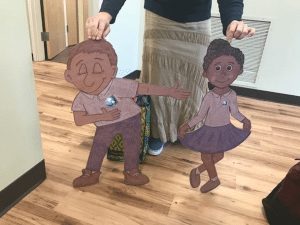The “4 R’s” of Normalization
Ultimately, we want our children to thrive in an environment that serves them and makes them feel secure so that the maximum amount of attention can be on learning. When you take pride in the environment that you’re offering to a young child. You will see that same confidence grow in their development, education, and personal growth. How do we create this? How do we know the child trusts the environment they are in? “Normalization” is the word that Montessori teachers use to describe the distance between their students and their environment. We do this by implementing the 4 R’s and we are sharing them with you now.
Rules: There are three simple rules you can instill in the school and home environment that will encompass most behaviors that we are trying to teach. Respect the classroom. Be kind to my classmates and myself. Be sweet with my words and hands. Any version of these boundaries can be repeated out loud and practiced regularly. If your student or child is aware of the rules in the classroom, they are given the opportunity to show you what they know within it!
Rituals: Watering plants, feeding the dog, checking the rain gage are great examples of rituals in the home environment and offer ways for your child to participate. In a school setting, rituals might include circle time, adding to the calendar, folding washcloths in the morning, having smoothies for snack on Tuesdays. Rituals are NOT requirements – they are options! This provides a young child a change to explore without worrying about the consequences. You’ve given them the successful tools to participate!
Roles: Establishing a role as a human is vital to survival. We have to know where we fit in our home, at work, in the community and also within the world. Students need to understand that their role is to learn within the freedom you’ve prepared for them. And your role is to observe, monitor, and advance their learning based on what you’re seeing. These roles have to be in tune with each other and working together to see success.
Routines: What happens when milk spills at your house? What happens if beans spill in the classroom? Where does the painting go while it needs to dry? These are just a few questions we need to ask ourselves while we are creating an environment for learning for young children. If these routines are not consistent or prepared, it is common to lose trust in the environment. Can you imagine having to find your toothbrush every morning? Can you imagine if the trash can moved around your kitchen at random and you never knew where to throw trash? The more you “disturb” a child’s environment, the further we get away from the routine they are trying to learn.
As you fuse the 4 R’s together, the gap between your child and the environment they are in will get much, much smaller.


